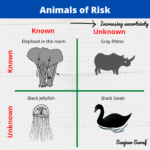A few weeks ago, Senator Frank Lautenberg proposed Secure Chemical Facilities Act (S. 3559) to the Senate committee on Homeland Security. The bill mandates Inherent Safer Technology (IST) or Inherently safer design (ISD) at high-risk chemical facilities.
Knowing the uncertainties surrounding the mere definition of inherent safety, one could say that it is preposterous to mandate IST. IST cannot be regulated and worse it would burden the industry. To a large extent this is true.
Some would even argue the need for a security regulation. But as I have written earlier, regulations are often in response to risk perceptions within the stakeholders. And a terrorist attack on chemical facilities resulting in release of toxic chemicals is an issue of topmost concern amongst the public and the regulators alike.
So, if there has to be a chemical security regulation, I believe IST has to be a part of it.
Why IST?
Without IST requirements, what will a chemical security regulation achieve? – More guns, gates and guards!!!
What about a Bazooka scenario? – Can guns, gates or guards prevent a Bazooka?
Above scenario may or may-not be credible or have a low probability but it has grave consequences.
Without IST, the hazard potential will stay the same. Therefore, any regulation that requires reduction/substitution of high-risk chemicals (a desired outcome of ISD application) is bound to help reduce the consequences.
It is my understanding that application of IST has reduced number of high-risk facilities from 7,000 to 5,000 in 2008-09. Now the key here is how the reduction in use of high-risk chemical is being achieved and careful thought should be given to the entire supply chain.
As a matter of practicality, I suggest thinking about inherently safer processes as lower risk alternatives.
I realize there may be disagreement surrounding IST, but I’m sure everyone agrees upon lowering of risks.





